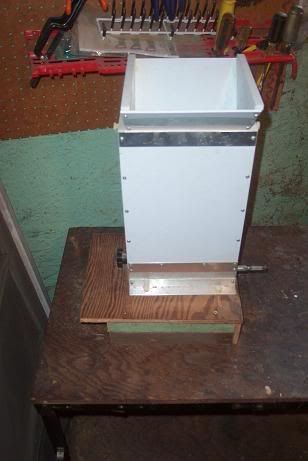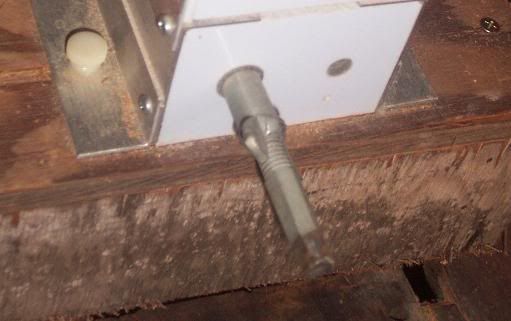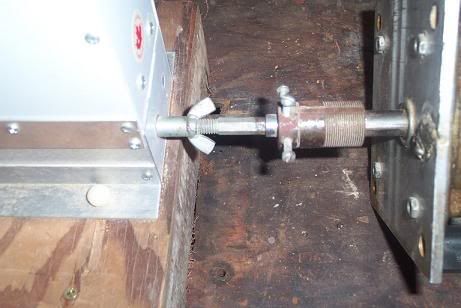by Gary Corbin and Laura Guimond
This is another installment in a series about the breweries, pubs and beers that we encountered in our recent trip to Britain and Ireland. In this article we focus on pubs and beers in Scotland and northern England.Many import and craft beer lovers gain familiarity with British ales such as Bass Ale and Newcastle Nut Brown Ale early in their “good beer” education. Typically, the newcomer to these highly flavored brews immediately notes the dramatic difference between these beers and the domestic lagers (Budweiser, Miller, Coors) or even the continental-style pilseners (Heineken, Beck’s) available on the American market. As a result, at first taste, these British beers can seem pretty similar to one another. Certainly, the beers in Scotland and northern England share similarities with their southern England cousins, and even with the Irish reds we’ve discussed in prior columns. But they also diverge from them in important ways – a distinction that is a pleasure to discover through experience “in country,” as we were fortunate enough to do.
EdinburghFibber McGee’s, a Caledonian tied house, was just up the street from the house we stayed in, in “New Town” just north of the fashionable Princes Street. Fibber’s Dribble – the house ale, equivalent to Caledonian 80/-, was a cask ale with a medium head, deep gold/light copper in color, with a malty/fruity and lightly hoppy aroma. Toward the full-bodied side, it was malty with moderate bitterness and was a bit tart; fruity and hoppy in the middle and finish with a light caramel note. Deuchar’s IPA, also a cask ale, was one of the best we tasted on the trip: floral hoppy aroma, gold color, and clear, it was medium to full-bodied, malty, and sweet, balanced by strong hop bitterness. True to style – but not to the Scottish Ale tradition -- it had strong and complete hop profile (aroma, bitterness, and finish) with a touch of residual sweetness at the end.
Rose Street Brewery is a small, smoky brewpub owned by the giant Scottish and Newcastle brewing chain, also in New Town. The Auld Reekle 90/- Ale, a cask ale, was dark brown with a long-lasting creamy head that accentuated the beer’s esteriness. There were also malty and “cooked corn” aromas. Mild, medium-bodied and sweet, we detected some chocolatey roasted malt flavors. It had low bitterness and a sweet finish.
At
The Filling Station, an overly touristy pub on the Royal Mile, we tried Campbell’s Bitter, a keg beer with a moderately thick, long-lasting head, gold/light copper in color, and fruity, hoppy aroma. It was a bit thin-bodied, fruity in flavor and just a tad dry, but well balanced with a hoppy aftertaste. Note: if you ever eat in this place, stay away from the microwaved pasta – believe it or not they served up Portland’s own GardenBurger, which was much better.
Greyfriar’s Bobby’s is one of Edinburgh’s most famous pubs (at least among tourists). It was named for the dog whose master died when he (the dog) was two years old – and the dog spent the next 14 years guarding his master’s grave. It’s a friendly place but attracts a pretty young crowd that goes there for the loud music rather than the fine beer they serve. Bobby’s Best Ale, a 4.4% ABV cask ale, had a medium-to-low head, a reddish/copper color, and was a bit cloudy. It had a very fruity hop aroma and flavor – it dominated the thin-bodied but somewhat sweet beer. Yet it was low in bitterness, an unusual Scottish ale. Still, we preferred it to Calder’s 70/-, a brown keg ale served too cold with a thin but well-lasting head and some hop and fruit aromas. It was thin-bodied with roasted malt, caramel, and fruity hop flavors, together with hop and roasted malt bitterness but low on sweetness and malt flavor, and it had a bitter finish.
The Shore Inn was a great place for dinner, and for a fine pint as well. We had Maclay’s Kane Commemorative Brew, a cask ale with thick long-lasting head, a hoppy aroma and some banana esters. Thin-to-medium bodied, golden to light copper, it was nonetheless balanced between its aggressive hop bitterness and a malty but not sweet flavor with a touch of citrus and a bitter/hoppy finish. Maclay’s 80/-, also a cask ale, had a rich copper-red color, little aroma of any sort, and a thick, long-lasting head. Also thin-to-medium bodied, it's moderately malty and sweet with some caramel and low-to-medium bitterness. By contrast it had a dry, moderately bitter finish.
GlasgowThe Brewery Tap is really two pubs in one. During the day, it’s a quiet neighborhood bar in the University district with plenty of great ales on tap. At night it’s packed with students rocking tattoo-to-tattoo to the latest alternative music. We tried it – and liked it – both times of day. Apparently, so do the rich and famous: Mel Gibson made this pub his favorite haunt while filming Braveheart. He favored the Fraoch Heather Ale, a tasty golden cask ale made with heather flowers in addition to hops. It’s very smooth, medium-bodied, and not very bitter, rather akin to a wheaten ale.
The Harviestown Montrose Ale, brewed in Dollar, Scotland, is cask-conditioned, with a medium-sized very creamy head. The ale is bright red, crystal clear, medium-bodied, very malty, a bit caramelly, and a bit sweet, but balanced by moderately strong bitterness and a medium-hop finish. This is one lovely ale.
The Caledonian Blonde is pale gold, with a heavy, rocky head. It had a strong DMS aroma. Light-bodied, bitter, malty but not sweet, it resembled a golden ale or very mild kolsch. We liked the Blonde well; less so the Mayfest Ale, a deep gold to light copper colored cask ale. It had a wonderful long-lasting creamy head and strong esters of banana and pineapple. Medium-bodied and moderately sweet, it had a high level of bitterness and a bitter finish with some funky “wet socks” off flavors. Finally, the complex Ind Cooper’s Burton Ale, a deep gold colored cask ale, had a thin but long-lasting creamy head. Rather thin-bodied, with medium maltiness and low sweetness, the bitterness starts slowly and finishes strongly, with a rush of hop flavor in the middle. It had a malty and slightly citrusy aroma.
Here’s an important traveling lesson for all Brew Crew members: flaunt your expertise! We bought a ½-pint of ale, intending to surf the various taps on a tasting spree. Once our friendly bartender, Stan, discovered this, he kindly provided several tasting samples gratis, just to hear what we thought of them. Not only that, he gave us a bar towel, pulled a poster off the wall as our second souvenir, and shared his own expertise on pubs to visit in Edinburgh.
The Three Judges, a Maclay’s tied house, is a beer-lover’s pub just outside the University of Glasgow frequented primarily by professionals and real beer lovers. Here, for example, we met a card-carrying member of CAMRA (Campaign for Real Ale). He gave us a tour of their eight-entry cask ale menu, which had sported over a thousand different ales in its time. The Bruce (4.8% ABV) was golden colored, with a quickly dissipating head, but a very hoppy, floral, and citrusy aroma. Full-bodied and strongly bittered, it was also very malty in flavor without being overly sweet, and had a very hoppy finish. Curiously, this was billed as a porter, although I’d call it a great IPA. Almost as good was Judges Grand, their 1000th ale, a cask pale-to-copper ale with a low, rocky long-lasting head, thin-to-medium body, moderate fruity/hoppy aroma, fruity sweet flavor, low bitterness, moderate maltiness, and a hoppy, dry finish.
ObanThe Scots are fond of reminding visitors that, unlike Wales or Ireland, Scotland was never conquered by the English. On the other hand, English troops have been in Scotland frequently enough, enforcing the will of the English crown, to be the source of innumerable traditions and legends. One of our favorites is the story associated with the
Tigh-an-Truish, a tiny pub on Seil island off the west coast near Oban. At one time, in an attempt to crush Scottish culture, the English forbade the wearing of kilts on the “main” island. Scots leaving Seil would stop at this pub to change from their kilts (in Gaelic, tigh) into trousers (truish) – and, naturally, have a pint or two. Naturally, this meant that they needed to stop in on the way home as well. (You gotta love a story with a happy ending.)
In addition to a surprisingly good vegetarian dinner (rare in the UK), we sampled two cask ales. Summer Lightning by Hop Back Brewery (England) was gold colored, with a low, rocky but long-lasting head. It had strong, hoppy aroma, with little or no esters. Medium bodied, moderately malty and not too sweet, it is 5% alcohol by volume, very strongly bittered and very hoppy in flavor. It had a strong hop finish and no off-flavors. Its hoppiness, we were to find, is unusual in this region – more similar to American ESB’s in the Pacific Northwest than to its in-country counterparts.
By contrast, Younger’s Tartan Special had a deep copper color, again a low head with excellent retention. Bitter, very low hop aroma, it was hoppy up front and had a dry hoppy finish. It was low-medium bodied, malty and bready in flavor but again low in sweetness with slight caramel notes.
The Lorn Hotel had a smoky bar worth only a quick stop, where we tried Hoskin’s Churchill Bitter. This dark brown cask ale was a bit cloudy, almost opaque. Its low head dropped quickly. It had a fruity, winy aroma and flavor, with low bitterness but some sweetness and roastiness on the tongue. Its moderate hop flavor was more accented on the finish, with some astringency. At The Oban Inn, we tried Gillespie’s Stout, a keg stout with a thick, rocky, brown head. Dark brown/reddish in color, with some esters and malt roastiness in the nose, it was medium-bodied, sweet, low in roast malt flavor, moderately bitter with a sweet finish and a touch of sourness throughout.
Heading southWe drove from Edinburgh through the Borders region, land of William Wallace (Braveheart), ancient manor houses, and zillions of sheep, and into northern England for a tour of Hadrian’s Wall, the Cathedral at Durham, and of course some excellent pubs.
The Traveller’s Rest Inn in Witton Gilbert, County Durham served up a hearty ploughman’s lunch and stories of the town back in the days when Laura’s grandmother toddled about. While listening we sipped a Theakston Best Bitter, a cask ale with long-lasting medium head, gold color, hoppy aroma, not very estery or citrusy. It was thin bodied, medium bitterness, low sweetness, low to medium maltiness, low but noticeable hop flavor, and a slightly hoppy finish. Burglar Bill’s, a complimentary taste from the friendly bartender, was a reddish ale with a thick, rocky head, somewhat malty and slightly hoppy aroma. It was medium bodied, malty, moderately sweet, and while only moderately bittered the bitterness lasted to the finish.
ConclusionThe Scots and the northern English love a good pint as well as their London and Dublin cousins, but they’d define the ideal pint a bit differently: sweeter, and with more bitterness, higher alcohol, and more hops throughout the beer’s profile (although still less than the average Portlander might prefer). The beers tend to be darker, a bit roastier, more citrusy, and more likely to be cask-conditioned and less likely to be pumped with nitrogen-CO2-mix gas than in London. The pubs play an equally central role in the daily life of a Scot and northern Englishman as a Dubliner or Londoner and are similar in character, though each has its own unique charm, and with a few horrid exceptions the food tended to be much better in Scottish pubs.
If you’re planning a trip to Britain, be sure to allocate enough time to spend several nights in Edinburgh, Glasgow, and the Highlands. The people are warm and friendly, the scenery is majestic, the history is fascinating – and of course, the beer is excellent.







